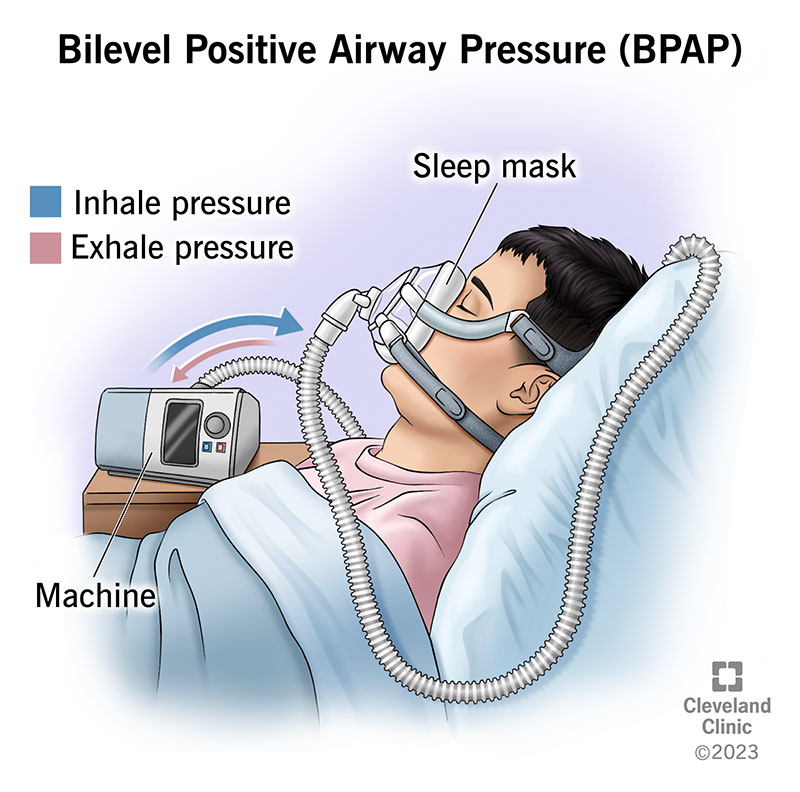Bipap vs. CPAP: Which Is the most effective for Your Sleep Problem?
When browsing the complexities of rest problems, the choice between BiPAP and CPAP therapy is a critical factor to consider. While CPAP offers a constant air movement appropriate for obstructive sleep apnea, BiPAP's twin pressure setups may enhance convenience for those with more detailed respiratory issues.
Comprehending Sleep Disorders
Rest disorders include a variety of conditions that disrupt typical sleep patterns, impacting both the high quality and duration of rest. These problems can show up in different forms, consisting of sleeplessness, rest apnea, narcolepsy, restless leg disorder, and parasomnias. Each condition provides one-of-a-kind challenges, frequently bring about considerable daytime exhaustion, cognitive impairment, and emotional disturbances.
Sleeplessness is characterized by problem dropping or remaining asleep, while sleep apnea entails duplicated interruptions in breathing throughout rest, usually bring about fragmented rest. Narcolepsy, on the other hand, is noted by excessive daytime sleepiness and abrupt rest assaults. Agitated leg syndrome triggers awkward experiences in the legs, motivating an unmanageable impulse to relocate them, which can additionally prevent the capacity to fall asleep.
The impact of sleep conditions prolongs beyond private wellness, affecting total performance, connections, and top quality of life. Recognizing the specific nature of each disorder is vital for effective diagnosis and treatment. As sleep wellness ends up being significantly identified as a vital component of general well-being, attending to these conditions is necessary for improving both sleep high quality and daily functioning.
Just How CPAP Functions
Continual Favorable Air Passage Pressure (CPAP) therapy is frequently utilized as a key treatment for obstructive rest apnea (OSA) The mechanism of CPAP includes the use of a machine that delivers a consistent stream of air with a mask worn throughout rest. This airflow maintains favorable stress in the airway, preventing the collapse or obstruction of the throat that can take place throughout sleep.
When a patient breathes in, the CPAP maker supplies a continuous circulation of air, making sure that the respiratory tract remains open - BiPAP Rental. This not only reduces the signs of OSA, such as snoring and interrupted sleep patterns, but likewise reduces the affiliated wellness threats, including cardio problems and daytime exhaustion
The pressure settings on a CPAP equipment can be customized to satisfy individual client requirements, typically established with a sleep research study. On the whole, CPAP treatment has been revealed to significantly enhance the high quality of rest and total health and wellness for individuals experiencing from obstructive sleep apnea.
Exactly How BiPAP Functions
BiPAP, or Bilevel Positive Air Passage Stress, is a specific kind of non-invasive ventilation that is specifically useful for individuals with problems such as intricate rest apnea or breathing conditions. Unlike CPAP, which provides a constant stream of air at a single stress, BiPAP gives 2 distinctive pressure settings: a higher inspiratory pressure for inhalation and a lower expiratory stress for exhalation. This dual-pressure approach permits easier breathing, reducing the initiative called for throughout exhalation.
The tool runs through a mask fitted over the nose or mouth, connected to a machine that generates atmospheric pressure. When the client inhales, the maker provides the higher pressure to aid with air movement, making certain that the respiratory tract stays open. Upon exhalation, the device immediately decreases the pressure, making it extra comfy for the person to breathe out.

Key Differences In Between BiPAP and CPAP

On the other hand, BiPAP (Bilevel Favorable Airway Pressure) offers 2 various pressure settings: one for breathing and a reduced one for exhalation. This dual pressure system enables more comfortable breathing, specifically for clients that deal with breathing out against a constant stress. BiPAP is typically advised for individuals with complex rest apnea, chronic obstructive pulmonary illness (COPD), or those that call for additional support during sleep.
In addition, the complexity of BiPAP devices typically leads to a higher expense and needs a lot more cautious titration than CPAP. BiPAP Rental. Recognizing these key differences can aid in recognizing which gadget may be better for certain rest conditions, establishing the foundation for educated therapy choices
Selecting the Right Treatment
The decision in between BiPAP and CPAP treatment largely pivots on the certain attributes of the sleep problem, the individual's general health and wellness, and their comfort with the tool. CPAP, which provides a continuous stream of air, is frequently recommended for obstructive rest apnea (OSA)
Alternatively, BiPAP offers 2 levels of stress: one for breathing and a lower one for exhalation. This double pressure system is useful for clients with complex rest apnea or those who experience problem exhaling against a continual stress. Additionally, BiPAP is frequently suggested for individuals with respiratory system conditions, such as persistent obstructive pulmonary condition (COPD), where varying stress settings can boost comfort and compliance.
Inevitably, a detailed examination by a rest expert, consisting of a sleep research, can help figure out useful link which therapy straightens finest with the patient's requirements. Variables such as comfort, simplicity of usage, and details dig this medical problems need to also be thought about to maximize treatment results.
Final Thought
In recap, both BiPAP and CPAP offer distinctive objectives in the management of rest disorders. CPAP is efficient for obstructive sleep apnea with constant airflow, while BiPAP uses twin stress setups that improve convenience for those with complex sleep apnea or breathing problems. The option between these therapies should be led by specific demands and problems, necessitating an extensive analysis by a rest professional to make certain ideal therapy results and enhanced high quality of sleep.

Overall, CPAP treatment has been shown to dramatically improve the high quality of sleep and total health for individuals experiencing from obstructive rest apnea.
BiPAP is usually recommended for individuals with intricate rest apnea, persistent obstructive pulmonary disease (COPD), or those who need added assistance throughout rest.
CPAP is reliable for obstructive rest apnea via regular airflow, while BiPAP offers dual stress setups that improve convenience for those with intricate rest apnea or respiratory system problems.